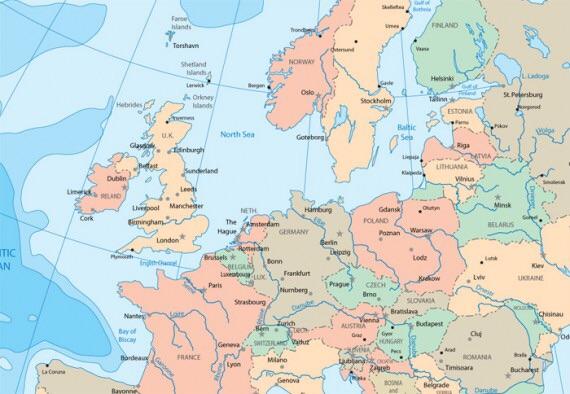Maps Without Denmark Exist?
As a general rule, most people assume that what’s on a map accurately reflects what’s on Earth.
But if you’ve been paying close attention, you’ll notice that many maps don’t include all existing countries, with Denmark being one of the more frequently missing areas, indicating it might be time to change up how we take accuracy for granted.

Countless theories have been posited in an effort to excuse why this small but important Scandinavian country often finds itself — much like New Zealand — unrepresented on our world maps.
Each has varying degrees of evidence behind them, but there are three theories for Denmark’s lack of inclusion that seem to hold water:
- It’s simply overlooked due to the geographic situation surrounding it
- Many mapmakers believe maps are more aesthetically-pleasing without it
- Denmark is seen as less “significant” than other countries, allowing it to be forgotten
Are you interested in digging a little deeper into this odd map-related mystery? Keep reading below to learn everything we know.
It's Middle Child Syndrome
For the first of these explanations, we have to go back and recap something very basic (but critical) about Denmark’s geography. Located in north-central Europe and categorically the most southern Scandinavian country of the bunch, Denmark is in a bit of a strange spot.
Rather than having a distinct, significant piece of land to call its home, Denmark primarily occupies a compact peninsula by the name of Jutland, which finds itself almost entirely sandwiched between the sea, Sweden, Norway, and its border neighbor Germany.

And what little area falls outside of this consists of several small islands, dotting the watery perimeters around Denmark’s mainland.
This leaves Denmark the proverbial middle child of its larger European family. It doesn’t stand out from the pack, entirely encircled by much bigger, more well-known, and prominent countries.
Denmark then fades into the background all too often, allowing it to be easily forgotten by cartographers and ultimately left off their maps.
On the Optics of it All
Out of all the suggestions for why poor Denmark’s absent from so many maps, its awkward location is likely the one that makes the most sense across the board.
After all, many smaller regions of our world tend to get overshadowed by those with either greater size, population count, or influence, and it isn’t a stretch to think Denmark’s fallen to this same fate.
However, aesthetics almost undoubtedly play a role for some mapmakers out there. As we just said — Denmark’s positioning is far from ideal. Zoom into a map, and this is even more apparent, the country is randomly situated in the midst of other regions nicely tucked away.
Clearly, this doesn’t matter on a practical level. But it does on an aesthetic one. Let’s not forget that maps aren’t purely a navigational or educational tool.
There’s also a decorative element there since maps are used for wall art and general decor, and having a small piece of land break up the map’s design or flow could jeopardize that.
Denmark does exactly that and can easily appear like a mistake rather than an intentional shape on world maps and those not as detailed.
Instead of risking the optics of a map, mapmakers will sometimes remove Denmark altogether, keeping their map more simplified in an effort for a smoother, nicer overall look.
Failure to Hit the Map
It’s a strong country with booming tourism, solid economics, and some of the happiest citizens in the world. In other words, it’s just as interesting and important as any other country on the map.
However, this doesn’t tend to be seen once again thanks to its unfortunate positioning, small size, and relatively quiet presence. It fails to hit the mark and grab attention, as such, and suffers for it.
The end result? Mapmakers don’t see it as a strictly necessary map feature and assume it won’t be missed, skipping over it without a second thought.

It’s a strong country with booming tourism, solid economics, and some of the happiest citizens in the world. In other words, it’s just as interesting and important as any other country on the map.
However, this doesn’t tend to be seen once again thanks to its unfortunate positioning, small size, and relatively quiet presence. It fails to hit the mark and grab attention, as such, and suffers for it.
The end result? Mapmakers don’t see it as a strictly necessary map feature and assume it won’t be missed, skipping over it without a second thought.

